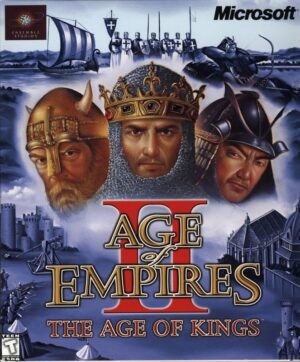Retro Replay Review
Gameplay
FF56! delivers a unique blend of visual-novel storytelling and interactive mini-games that keeps players engaged from start to finish. As you navigate through the graphic novel panels, key choices trigger diverse gameplay segments—ranging from slow-paced exploration to heart-pounding shooter sequences. These shifts in pace prevent monotony and keep the tension of the Hungarian Revolution of 1956 alive throughout the experience.
The exploration games emphasize environmental storytelling, encouraging you to search for hidden documents, overheard conversations, and period props that deepen your understanding of the setting. Shooter scenarios are simple yet effective, with cover mechanics and limited ammunition that simulate the scarcity and urgency faced by revolutionaries. The escape and rescue missions introduce puzzle elements—deciphering guard patrols or finding secret passages—which add a satisfying challenge without becoming overly complicated.
Controls are intuitive whether you’re tapping through dialog choices or aiming in a mini-game. The user interface adapts seamlessly: dialogue options appear clearly on screen, while action sequences automatically switch to a streamlined HUD. Difficulty settings let you adjust enemy accuracy and puzzle hints, ensuring both casual history buffs and seasoned gamers can find a comfortable challenge level. Overall, FF56! strikes a balanced approach between narrative focus and interactive gameplay variety.
Graphics
Visually, FF56! resembles a hand-drawn graphic novel come to life. Character portraits are richly detailed, capturing the fear and hope in the eyes of the three protagonists. Backgrounds depict 1950s Budapest with weathered facades, cobblestone streets, and the occasional burst of firefight smoke, all rendered in muted, realistic tones punctuated by vibrant moments of red and gold to evoke revolutionary fervor.
During mini-games, the art style shifts subtly to match the gameplay tone. Exploration segments maintain the illustrated aesthetic but introduce subtle lighting effects and particle animations—such as drifting snow or ash—to heighten immersion. Shooter sections adopt a slightly more dynamic animation style, with muzzle flashes and ragdoll physics that, while not hyper-realistic, deliver satisfying visual feedback when you nail a tense headshot.
The user interface complements the art without overwhelming it. Dialog boxes are styled like aged newspaper clippings, and menu icons blend brass and wood textures to reflect mid-century design. Transitions between panels use elegant page-turning or cinematic pans, reinforcing the feeling of flipping through an interactive history book. Performance remains stable on most platforms, with only rare frame dips during heavily animated escape sequences.
Story
At its heart, FF56! tells the story of three fictional teens—Anna, László, and Márta—whose lives intersect amid the chaos of the 1956 Hungarian uprising. Each character brings a distinct perspective: Anna is a student-turned-messenger, László a factory worker caught between orders, and Márta a church volunteer risking everything to smuggle medical supplies. Their paths weave together organically, creating emotional highs and lows as alliances form and betrayals sting.
The writing strikes a careful balance between historical accuracy and personal drama. Key events—the storming of the Radio Budapest building, clashes at the Parliament steps, silent solidarity in candlelit vigils—are recreated through immersive first-person narration. Dialog is often supplemented by actual newsreel headlines or archival photographs, grounding the fictional story in its real-world context and adding weight to every choice you make.
Player decisions carry genuine consequences. Saving a wounded comrade might delay your escape and trigger a different ending, while choosing to share sensitive intelligence can alter the fates of entire factions. These branching paths encourage multiple playthroughs, and even small dialogue shifts can reveal hidden subplots or unlock bonus mini-games that shed more light on individual backstories.
Overall Experience
FF56! offers a compelling fusion of education and entertainment. Its interactive graphic-novel format serves as both a gripping narrative vehicle and a window into a pivotal moment in European history. By weaving mini-games into the storyline, the title transforms abstract historical facts into visceral experiences that resonate emotionally long after the credits roll.
Replay value is high thanks to branching dialogues, secret challenges, and alternate endings tied to your strategic choices. The game’s moderate length—around six to eight hours for a single run—makes it accessible to gamers looking for a focused experience without unnecessary padding. Optional historical fact sheets and a visual archive mode provide depth for history enthusiasts, while gamers craving more action will appreciate the well-timed shooter and escape segments.
In sum, FF56! stands out as a thoughtful, well-executed title that educates as much as it entertains. Its seamless integration of narrative and gameplay, combined with evocative art direction and meaningful player agency, make it a must-play for anyone interested in interactive storytelling or 20th-century history. Whether you come for the story of three teens or the thrill of covert rescue missions, FF56! delivers on all fronts.
 Retro Replay Retro Replay gaming reviews, news, emulation, geek stuff and more!
Retro Replay Retro Replay gaming reviews, news, emulation, geek stuff and more!




Reviews
There are no reviews yet.